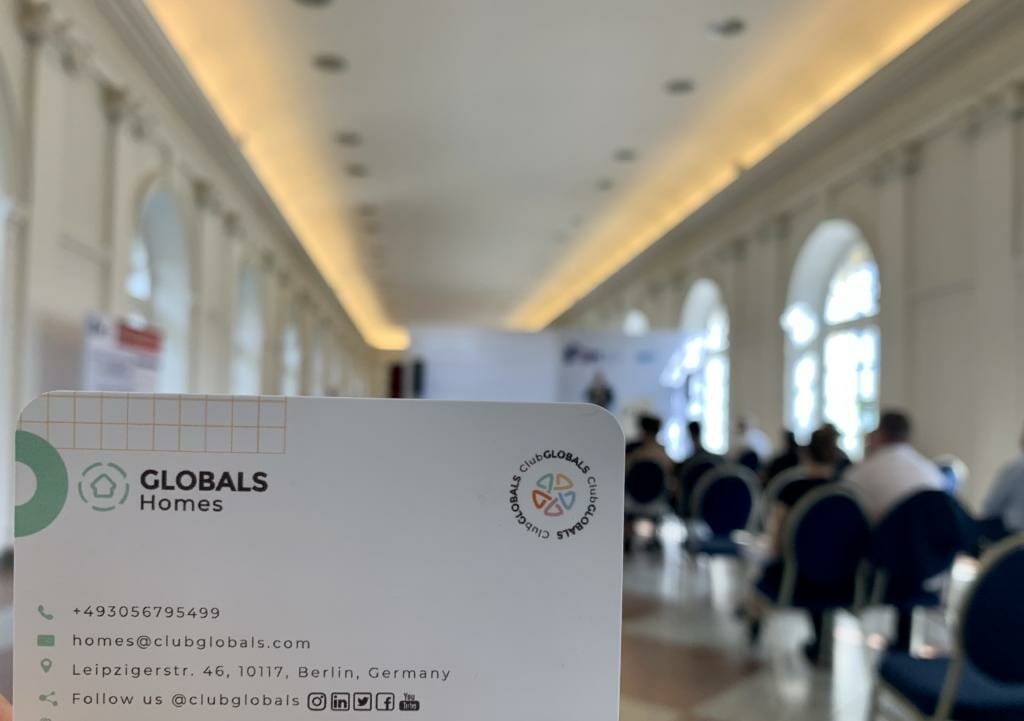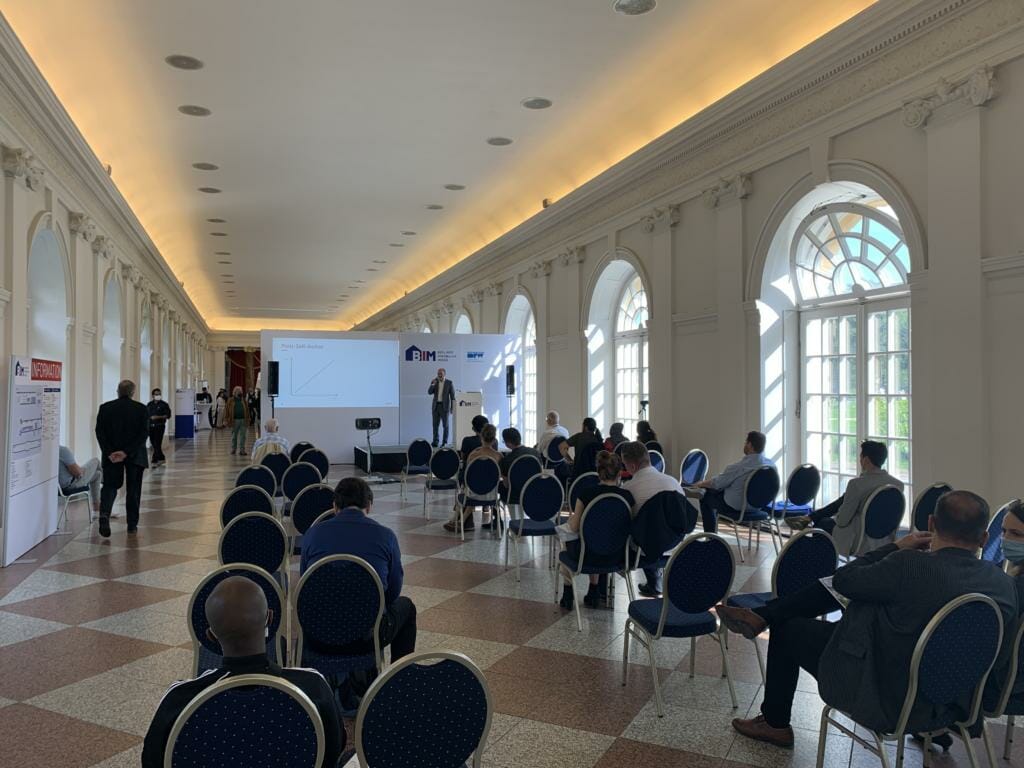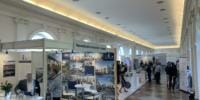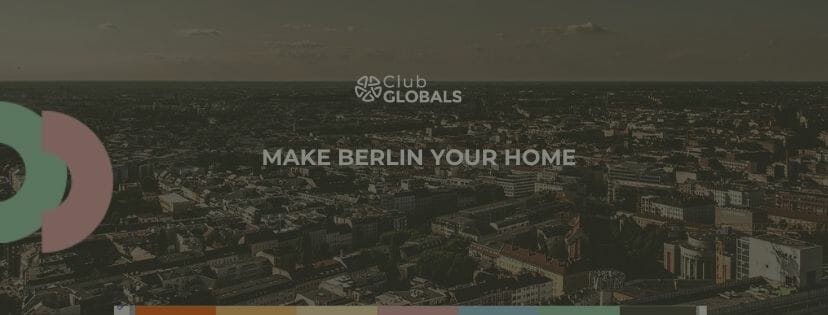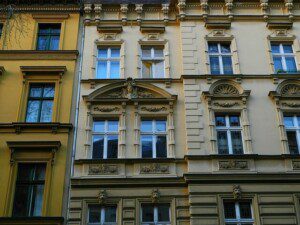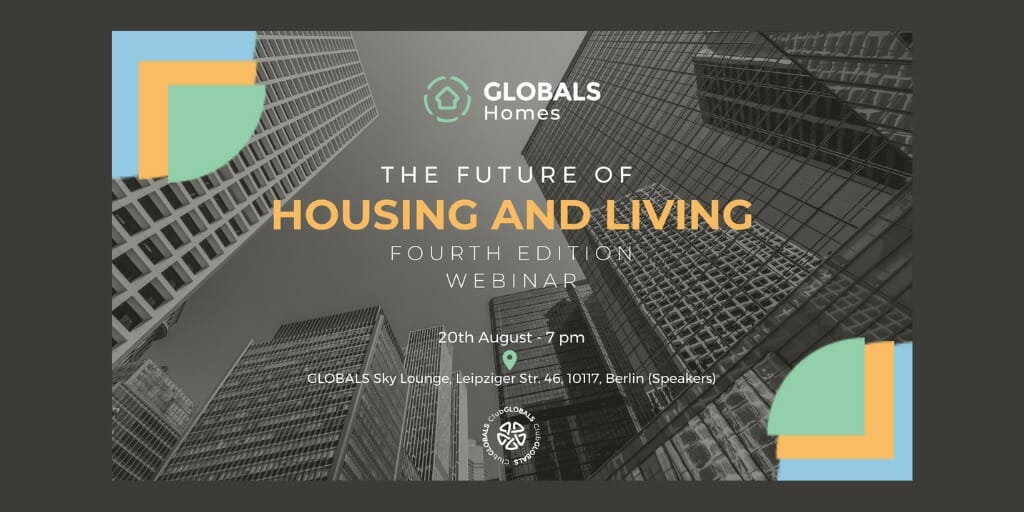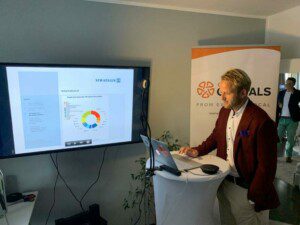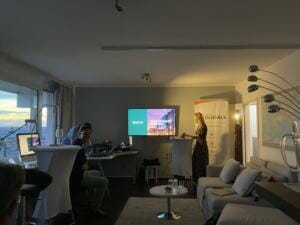The post Berlin’s most desirable neighborhoods to live in appeared first on Club GLOBALS.
]]>Ah, to live in Berlin. The capital of Germany is a bustling metropolis welcoming any and all who dare to call her home. Known for an open mentality, a top-notch nightlife scene, and home to a thriving start-up atmosphere, Berlin is an enticing choice to settle down in.
One of the key steps in doing so? Finding a place to live. The housing shortage in Berlin combined with the intricacies of German bureaucracy can make house hunting a headache. In an attempt to alleviate some of the stress, GLOBALS Homes features some of the best apartments in the city.
Choosing just where to live in Berlin is an important choice! The charm of Berlin is the different worlds that can be found depending on the neighborhood you happen to be in. Read on as we highlight three of Berlin’s most desirable neighborhoods – and the apartments that will let you call them home!
Lichtenberg
Just East of Mitte lies the quiet district of Lichtenberg. At first glance it can seem far removed from the vibrant and historic center of Berlin but don’t let that fool you!
In just 15 minutes you can arrive at Alexanderplatz. Strolling through this quiet suburb, its free from the broken glass and hipsters that crowd Kreuzberg and Neukölln’s busy streets.
Within 20 minutes from the Lichtenburg S+U station you can travel back in time and visit the historic former Stasi Headquarters, or travel to Vietnam and step inside the Dong Xuan Center, an Asian market with over 150 stalls. You can also visit one of East Berlin’s most famous attractions, Tierpark, a large zoo where animals have free roam and gives residents an amazing green space in the center of the district. Lichtenberg is a trending gem in Berlin, get here fast!
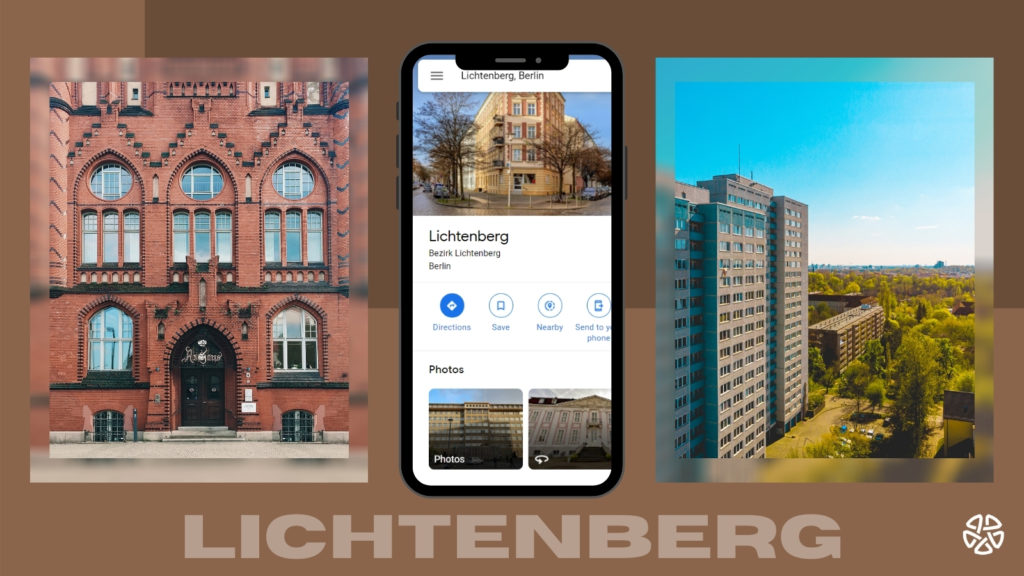
Sorry, there were no items that matched your criteria.
Mitte
Mitte means “center” or “middle” in German and you can bet that if you live in Mitte you can reach anywhere in Berlin’s city limits very easily. Not only are you well connected with transit, but the multiple bars, restaurants and cafes are not just there for the tourists.
Grab a craft beer around Torstrasse, visit the Berlin Wall Memorial or catch a show at Babylon Berlin or the Volksbühne and discover that thriving Mitte is the heartbeat of the city and one of the best districts to live in.
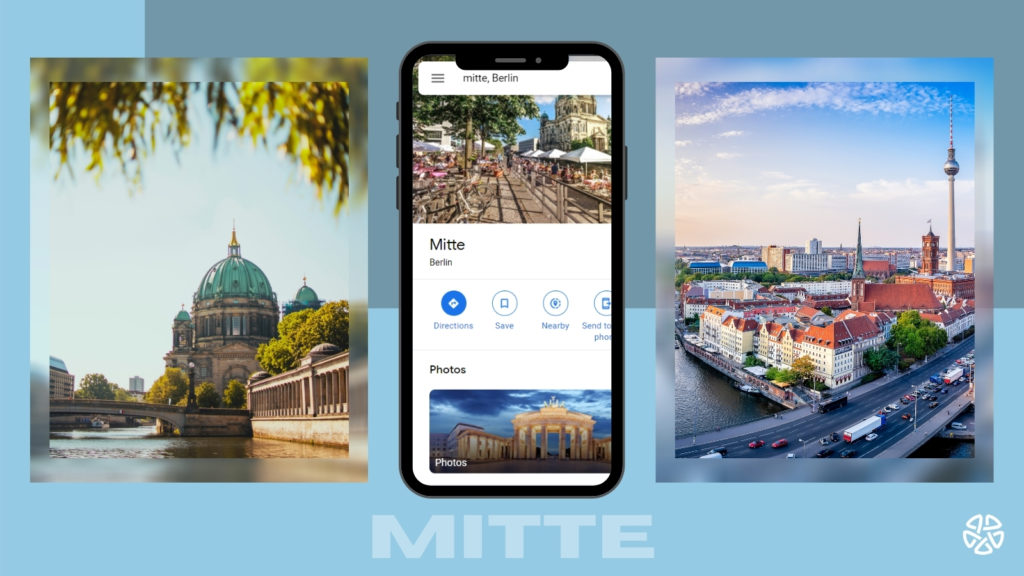
Sorry, there were no items that matched your criteria.
Schöneberg
Discover all the colours of Berlin within one district. Famous since the 1920s for its vibrant LGBTQ+ scene, Schöneberg really has something for everyone.
You can browse the latest trends at the famous KaDeWe (Kaufhaus Des Westens), one of the largest department stores in Europe. For nature lovers there is the protected biological park Schöneberger Südgelände, a nature reclaimed WWII rail yard and just in the district limits is Templehofer Field, the airport-turned-public-park, where you can catch the best sunsets in the city.

Sorry, there were no items that matched your criteria.
The post Berlin’s most desirable neighborhoods to live in appeared first on Club GLOBALS.
]]>GLOBALS Homes and the BIM: A World of Real Estate Opportunities
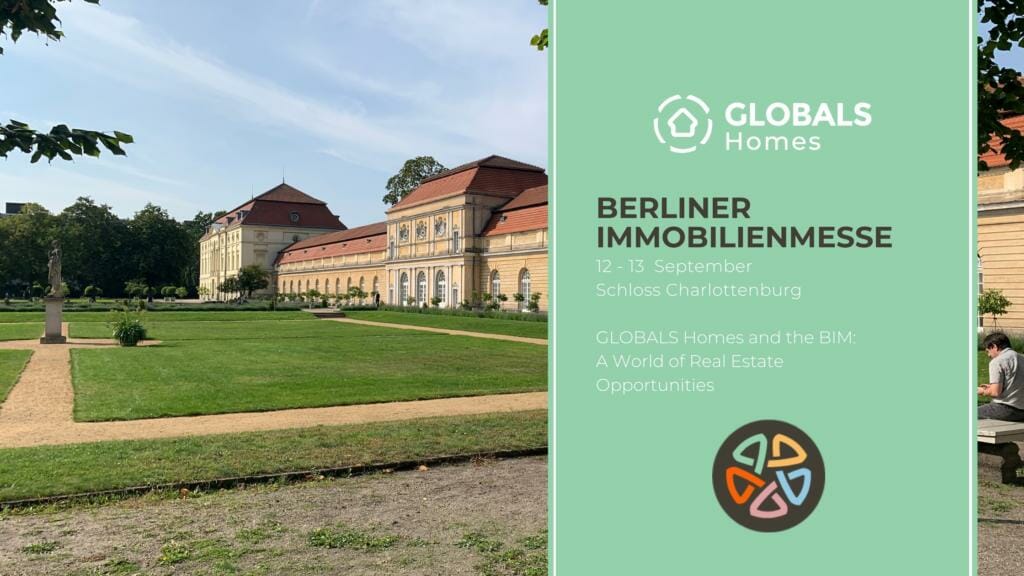
On 12-13 September, the Berliner Immobilien Messe (BIM) was organized in the renowned Charlottenburg Palace in West Berlin. This fair takes place on a yearly basis and provides real estate market insights to those who are interested in purchasing property or a piece of land as an investment or for private use.
GLOBALS Homes was there too. Even under strict COVID-19 measures, our team still enjoyed the ambience and shared some nice ideas with the exhibitors and speakers. Mario Paladini, founder and CEO of Club GLOBALS, had the honour of interviewing Dr. Florian Forster, who is the founder and organizer of the Berlin Immobilien Messe. Watch the video interview below made by GLOBALS TV:
Our aim was to get to know the real estate players and the current circumstances in which the real estate market finds itself, notably since the pandemic took its toll. It turns out that, although a multitude of projects in Berlin have already been completed, the outlook for the construction of real estate properties in Berlin’s central locations is getting tighter.
These findings corroborate the viewpoints shared during GLOBALS Homes’ previous event on “The Future of Housing and Living 4th Ed.” which took place in August 2020. However, Berlin remains a hotspot for real estate projects, especially in East Berlin, given the recent announcements Elon Musk gave on the soon-to-come Giga Tesla factory. Check out our blog for more on this topic.
GLOBALS Homes, a platform which provides homes to buy, rent and rent furnished in Berlin and Barcelona, is continuously looking to improve its product offering by seeking out potential partnerships with key actors at events such as BIM. Stay tuned for upcoming real estate fairs!
The post GLOBALS Homes and the BIM: A World of Real Estate Opportunities appeared first on Club GLOBALS.
]]>Make Berlin your Home
Living in Berlin
If you ask Google, how expensive it is to live in Berlin, it will answer that the prices are rising, especially for housing. But if we compare Berlin to other cities in Germany, some things are much cheaper.
Germany is considered one of the cheapest countries in the world for grocery shopping. The monthly fee could be anywhere between 100 to 200 euros. But if you’re not much of a cook yourself and prefer eating out, be prepared to spend up to 300 euros.
Transportation and mobile phone fees are also quite cheap if you’re a student, rent prices range from 400 to 800 euros. The cost of rent depends on how big you want your apartment to be, as well as location. Sharing an apartment will cost you at least 400 euros and for bigger flats, the payment would be about 1500 euros.
Where to rent?
Wondering where to rent in Berlin? We got you covered! Berlin is so diverse that it can make anyone feel at home. Whether you’re a free spirit, hipster, party animal or prefer a quiet life to the party, Berlin can satisfy all your needs.
If you like to be close to clubs, street food markets, and outdoor cinemas, Friedrichshain is a good choice. It’s also great if you lead a vegan lifestyle and like dining outdoors. Kreuzberg also has good places for eating out, it’s full of affordable street food, coffee shops, and squats. Neukölln too has quite a lot to offer, from cozy, dim-lit bars to independent shops, tattoo studios, and arthouse cinemas.
If you’d like to find out more about other districts and which one is most suited for you, our housing Advisor Vincent from Berlin and Ignacio from Barcelona would be more than happy to help you. Find out more about them!
You can also visit Wunderflats and choose which furnished apartment to rent based on location, price range, and a number of rooms. More options to find apartments furnished or unfurnished are wg-gesucht.de, immonet.de, immobilienscout24.de, GLOBALS Homes, and eBay Kleinanzeigen. Do not forget to consider some Housing Companies like immobilo.de and Deutsche Wohnen.
Once you choose the location and are ready to move in, it’s time to cozy up the place. For interior design solutions, Houzz is an excellent platform to provide you with the best professionals for interior designs. However, product providers and different kinds of professionals related to finding and making your perfect home.
When it comes to furniture, you’ll find the most affordable and stylish pieces at Ikea. For sure, you would like to give your house your personal touch in colors, walls, or even make it more friendly and accessible. All that you need you can find it in Aroundhome and hagebau.de.
Electronic supplies are best bought from Mediamarkt, Saturn, Amazon, or Ebay.
Where to buy?
When planning on buying a flat in Berlin, be sure to check out ImmoScout24. They offer different types of real estate properties, from flats and houses to office spaces and garages.
We would also suggest checking out our GLOBALS Homes. Here you can find a variety of available properties. Also, request or list a property that you’re trying to rent or sell. One of our previous blogs could give you useful information about buying decision: What to consider when buying an apartment in Berlin
Image by Karl Herl from Pixbay
Housing insurances
Housing insurance is also an important aspect to keep in mind. Generally in Berlin and Germany , every object you have in your apartment is considered a household good. Therefore is covered by house insurance. And, it covers damages from fire, water, storm, burglary, and vandalism. We would like to recommend you Arag.de and Tarifcheck.de where you can find a variety of insurances not exclusive for the property.
Berlin event
Be sure not to miss out on our Globals event: The Future of Housing and Living on the 20th of August. The panel discussions will cover an introduction to what you need to know about the real estate in Berlin. You’ll learn about the current trends in real estate and innovation in post-corona times.
See you there!
The post Make Berlin your Home appeared first on Club GLOBALS.
]]>The post The Future of Housing and Living Fourth Edition appeared first on Club GLOBALS.
]]>
In August 2020 we organized an event called The Future of Housing and Living Edition. It was our very first hybrid event hosted online and offline due to the restrictions in place for the Coronavirus. The panel discussions covered an introduction on what there is to know about the real estate market in Berlin. As well as the current trends in real estate and innovation in post-corona times.
The webinar was managed by our founder and CEO, Mario Paladini, who welcomed the participants, speakers and partners.
Starting with the presentations
The first presentation was Zoe Zhou, project manager for GLOBALS Homes at Club GLOBALS. She presented a newly-launched GLOBALS Homes project to the audience. And, Vincent Weiland closed off by answering questions about doubts on buying or renting in Berlin.
Next up we had Kyrill Krystallis, founder of Inside Insight. We learnt a few tricks on how to get more traffic to websites, as well as how to use the software to get the best results.
Thomas von Muenster then took the stage to speak about real estate investment, and why Berlin is the city to start investing in with attractive loan and mortgage options.
After this presentation, Carsten Heinrich presented a step-by-step scenario in which foreign investors can buy property in Berlin, as well as the different costs and fees to be taken into account. He answered a critical question on whether foreign investors are able to buy property without actually being on-site or even in the country, and also the importance of having a property manager.
The next speaker, Arkadi Jampolski from Wunderflats, talked about the furnished apartments market. Although impacted by the pandemic, Wunderflats saw an exponential growth in demand for internationals who now see Germany as the country to be in in post-pandemic times, especially due to its efficient crisis management.
Presentations moved on with Esther Bahne from Quarters Co-Living. She talked about how the pandemic had triggered a trend in individuals looking to share spaces with others, and that the niche-market they previously targeted had now become their main market. Esther believes with great passion that co-living will play a great role in the future.
The Pitches
Louisa Madders started the first round by presenting AiRelo. It is the world’s first smart city registration assistant whose sole mission is to make international life easier by helping them register in a city in one’s native language.
Tierry Ondet, explained the rapid growth of Room. A company focused on creating modular office spaces ranging from phone booths to flexible offices.
Finally, Gabriela Postole, an interior designer at Home Design Packages, expressed the passion she exhibits for design as well as her dedication to transforming any place into a true home, with all the talent she has to offer.
At the end of the webinar, Dirk Jacobs from 52° NorthStudio, took over the office and played some excellent music to keep the networking going.
You can check out everything related to the event on Instagram and Twitter with the hashtag #GHFHL20. Highlights on GLOBALS TV will be released shortly, so stay tuned! And do not miss our latest blog post on Making Berlin your Home.
Club GLOBALS would like to thank the speakers, the partners, the audience, and those who made this event possible in the first place. We hope to see you at our next event organized by GLOBALS Jobs this coming October 2020.
The post The Future of Housing and Living Fourth Edition appeared first on Club GLOBALS.
]]>What to consider when buying an apartment in Berlin
Advice for your consideration
Are you considering buying an apartment in Berlin? Maybe you are planning to move to the city or maybe you have already arrived? Are you thinking about ways in which you can best invest your hard-earned money? Or maybe you are looking for ways to lower your tax burden?
If you are wondering whether the hype surrounding Berlin is still strong enough to make real estate investments worth it, then this article might be of interest to you. In this GLOBALS Homes series, we will raise and answer many questions regarding purchasing real estate in Berlin. We will walk you through the pros and cons of buying, showing you aspects you might want to consider before making your decision.
In any case, your decision is an individual one—situations vary, backgrounds differ, and what might be a very expensive apartment to one individual can still be within the means of another. It all depends on the circumstances. The intention of this series is to show you a broad spectrum of factors that may influence your decision when it comes to purchasing your property. But, in the end, it is you—and only you—who makes the final call.
“Triple L”
So let’s get started with our first article which is dealing with the most important aspect that every real estate agent will tell you to consider when it comes to purchasing a property—the “Triple L”. No, I am not referring to live…laugh…love, ideally, you will be doing that, once you’ve made your choice. But when selecting your new home you should consider the “Triple L” which is: location, location, and (you guessed it) location.
But how do you know if a location is a premium? What defines a good location? Sure, the real estate agent will tell you anything and even make a place on the edge of the city seem premium. Check out also our post on How to avoid real estate scams?
And it might be because every city has its own unique dynamic and where, in one city, the center is the hotspot while, in another, it could be the city boundary beside the lake that everyone is flocking to. And guess what. Berlin has it all! So the “Triple L” in Berlin is complex—in a good way—as it provides many opportunities for prospective buyers to settle.
That being said, we must keep in mind that we are talking about buying a property in Berlin; the most populated city in Germany with more than 3,7 Mio inhabitants, thousands of companies offering jobs including a persistently growing startup scene where even fancier jobs are emerging. There are also four public universities where, as you know, students attend for free. Plus, more than 20 private universities for those who can afford it.
Additionally, Berlin is the capital of Germany so the city is packed with administrative buildings including the “Bundestag” and various embassies with thousands of politicians, lobbyists, and consultants. It is the place for governmental and non-governmental organizations, TV stations, press dependencies—basically everything you need to manage a country. It is the place to be.
Sure, the city is not what we would call an industrial stronghold, as the area around Cologne and Düsseldorf, or the wealthy south with its manufacturers in Stuttgart and Munich. But Berlin not only found its niche in creativity, culture, and tourism but also, biotech and health care.
So looking for a property in Berlin is per se a good idea, but the city is big and you need to be careful when choosing the area of your future place.
So let’s dive deeper into the city and create some understanding around its 12 districts.

Founded in 1237 Berlin has a long history of growth, destruction, separation, and unification. Check Wikipedia if you are looking for Berlin’s history of origins.
What has most certainly characterized the city which can still be observed today is the physical memories of Berlin’s separation post-World War II. With a wall separating the city between East and West Berlin that stood for nearly 30 years, two very different urban identities formed on each side of the barrier.
Along with this, two city centers arose: Kuh’damm and Alexanderplatz. And, in the years following reunification, the former border areas of the East/West separation that were once desolate experienced a strong construction boom. Potsdamer Platz, for example, is a result of this boom.
In the last 30 years, it has become one of the city’s most active corporate neighborhoods being that it is filled with thousands of office spaces as well as tons of flats, restaurants, and shops. Other new happening neighborhoods include Europa City (located north of the Hauptbahnhof), Friedrichstraße (Mitte), and Hackescher Markt (near Alexanderplatz).
Besides these urban centers which are international and one might say, also anonymous you will also find what we call “Kiez”, neighborhoods, each with its own atmosphere which is characterized by its residents and their social backgrounds. Google Bergmannkiez, Helmholtzkiez, or Sprengelkiez, and you will find little towns within the city with historic buildings, shops, restaurants, and parks.
While all these centric areas in Berlin are inhabited by a considerably international population, you will find yourself more and more surrounded by German neighbors the more you move to the city borders.
The strong population growth of the last few years has even intensified this distribution. Critics of this development say that the old population of Berlin is being pushed out of the city and Berlin is losing its “poor but sexy” image. And that is true if you look on the market.
After the reunification of Berlin in 1989, prices were comparatively low but have been rising ever since, especially the last 10 years. That of course also had an impact on the rental market, so people that used to be able to afford nice flats in central areas were soon forced to move out. One can say that this is the ugly face of capitalism and there are many initiatives by the city government to secure and provide affordable living space for people with a lower income.
On the other hand, it is a given fact, that in big cities like London, Paris, New York, etc. and most liveable ones it is almost impossible to live in a popular neighborhood on a small budget. Berlin is no exception.
The value of your property is essentially defined by its location. So, when analyzing potential properties, have a look at the neighborhood and its image. Take your time to stroll through different areas and feel the different vibes that each “Kiez” is sending to you.
Another determining factor is the infrastructure around your place. The proximity to public transportation, shopping possibilities, schools, and recreation areas are important not only to you but also to future tenants and buyers and make the place more attractive.
Also, have a look at the population structure, average age, social structure, and criminality. Depending on your situation you might prefer a solid Charlottenburg or you want to go wild in Neuköln with its exciting, yet at times chaotic, street life.
Every area has its demands and therefore a price. To give you an indication, you can see the average price per square meter for a newly built 80 square meter/3 room apartment in each area on the picture.

So, before making your choice, immerse yourself in the city. Feel its different atmospheres, get lost in its beauty and fall in love with your “Kiez”.
Once you have decided on a location, you should consider another aspect – time. Is now a good time to buy? We’ll look into that aspect in our next article.
The post What to consider when buying an apartment in Berlin appeared first on Club GLOBALS.
]]>World’s Most Interesting and Strange Cities
Centralia, Pennsylvania
A fire that began in 1962 never extinguished for 50 years. Many people migrated to other cities and countries in 1980.
Colma, California
The city with the most dead population. There are about 2 million tombs and more than one religious tomb. There are also animals in the cemetery.
Manshiet Nasser, Egypt
This city collects all of Cairo’s garbage. We all know that 6000 people in the city and they earn money from this garbage.
Pompeii, Italy
The destruction of the city of Pompei according to scientists is a natural disaster. Some also think prostitution, gambling, quarrels, rape of children, and various immorality in the city are the cause of the catastrophe.
Procida, Italy
The Italian island of Procida is unique. It is one of the oldest holiday destinations in the world. The main symbol of the miniature islets is the set of beautiful houses of all shades of the rainbow. This view of the island, which can be seen on postcards and souvenirs, unlike the water surface and the fascinating blue sky, the bright houses are marvelous.
Sheffield, Australia
In the 1980s, people wanted to establish a tourist federation in order to ensure the coming of tourists. They did this by drawing pictures on most of the walls in the city. Since 2003, a regular wall painting festival has been organized in the city. Although the population is less than 1000, 200 – 250 thousand tourists come to this festival every year. Art has been given importance in the city.
Slab City, California
In the city of Salton, which is in the southern part of the state of California, there is no law in the city that was established after World War II. If you’re on your way to the city, you’ll understand the huge structure of Salvation Mountain made by the American visual artist Leonardo Knight. Another interesting fact is that there is no clean water network.
Chefchaouen, Morocco
The Indians are very proud of their traditions. In Morocco, at the foot of the Reef Mountains, a magnificent city of Chefchaouen. The walls are traditionally painted in blue colors. People escaped the Spanish Inquisition and set up a small settlement in the mountains. Despite the fact that the first tenants had already abandoned their ancient stone houses, the tradition of painting the walls with blue colors remained.
Seven Giants Cliffs Siberia, Russia
The Northern Urals is located in the middle of Siberia. According to legend, these rockets were the real giant soldiers who froze to death while running away. The height of the rocks is 30-40 meters.
The post World’s Most Interesting and Strange Cities appeared first on Club GLOBALS.
]]>5 Most Liveable Cities for Tech Founders and Talent
Every year, The Economist Intelligence Unit (EIU) releases its Global Liveability Index—ranking 173 cities across metrics like stability, healthcare, infrastructure, and education. But in 2025, the question for global entrepreneurs isn’t just where life is good. It’s where business can scale globally.
As talent becomes borderless and capital flows cross continents faster than ever, startup founders are no longer choosing cities just for lifestyle—they’re selecting launchpads. Below, we break down the top 5 liveable cities of 2025 and, more importantly, what they mean for tech leaders building the future.
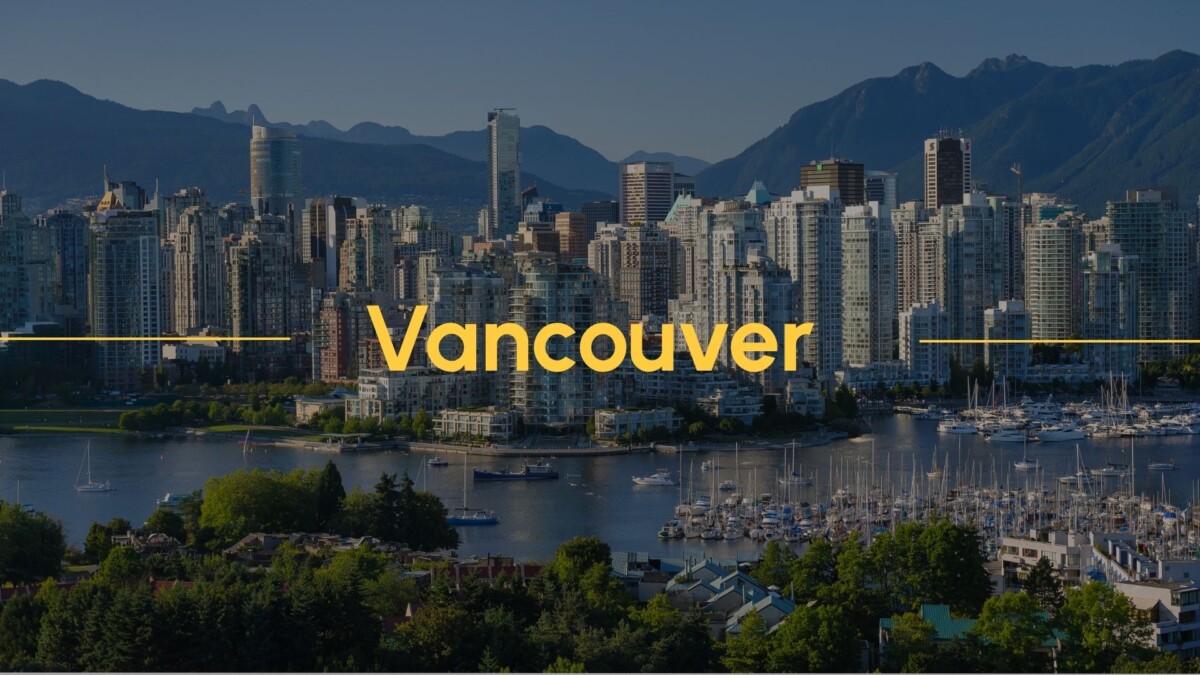
5-  Vancouver — North America’s Lifestyle-Driven Tech Powerhouse
Vancouver — North America’s Lifestyle-Driven Tech Powerhouse
Vancouver rounds out the top 10 globally in the EIU ranking—and it’s the only North American city on the list. Often overlooked in favor of Silicon Valley or Toronto, Vancouver is quietly becoming a cleantech and biotech supercluster.
In 2024, Vancouver startups attracted over $1.8B CAD in VC funding, with cleantech accounting for nearly 40%. Initiatives like Canada’s Net Zero Accelerator and programs from the British Columbia Innovation Council are drawing founders who want to build for impact.
Add to that a world-class quality of life, fast-track immigration for talent, and proximity to both the U.S. and Asia—and Vancouver becomes a seriously compelling base for any founder going global.
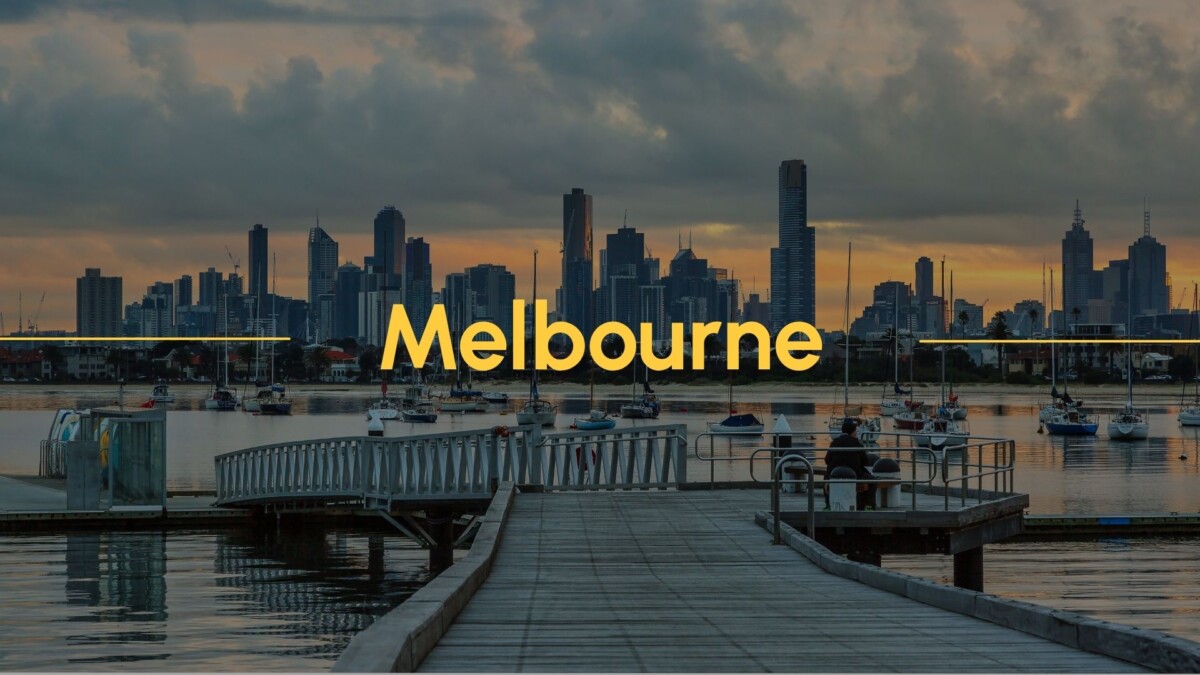
4-  Melbourne — Australia’s Cultural Capital Is Building Global Tech
Melbourne — Australia’s Cultural Capital Is Building Global Tech
Melbourne ranks 4th globally, with particular strengths in education and healthcare. But the real story is how it’s grown into Australia’s most founder-friendly tech hub.
The Victorian government offers co-investment funds and R&D rebates up to 45% for early-stage startups. The city is home to Muru-D, Stone & Chalk, and LaunchVic—programs that collectively back hundreds of startups annually.
In 2024, Melbourne-based startups raised over $2.1B AUD, with surges in healthtech, edtech, and AI. Its multicultural talent pool (nearly 40% of residents are foreign-born) and quality infrastructure make it an ideal city to build both MVPs and global operations.
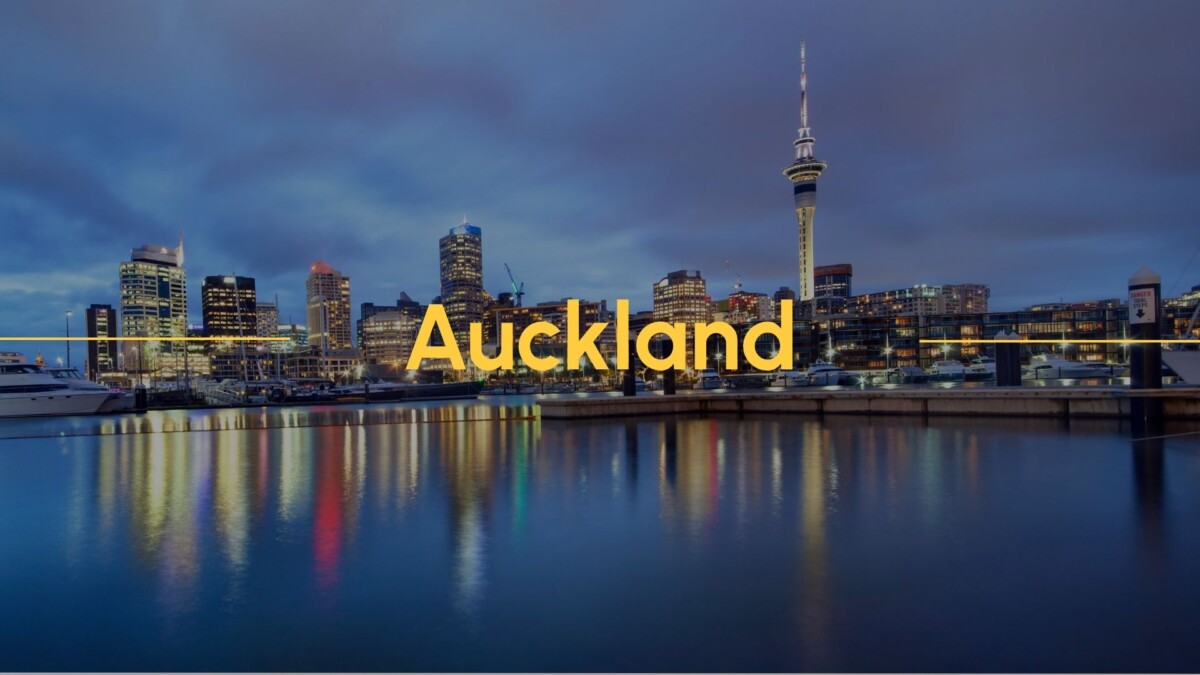
3-  Auckland — The Quiet Gateway to Asia-Pacific
Auckland — The Quiet Gateway to Asia-Pacific
At #7 in the global livability ranking, Auckland might seem like a lifestyle pick—but look closer, and it reveals strategic value.
New Zealand’s government has doubled down on tech in the past five years, introducing innovation visas, R&D tax credits, and grants for cleantech and gaming ventures. Auckland startups raised over $300M NZD in 2024, much of it in creative and sustainable technologies.
Its time zone bridges the Americas and Asia, and its workforce—drawn from Māori, European, and pan-Asian communities—is as global as it gets. If you’re looking for a headquarters in the Pacific with growth grants and quality of life, Auckland deserves more attention than it gets.
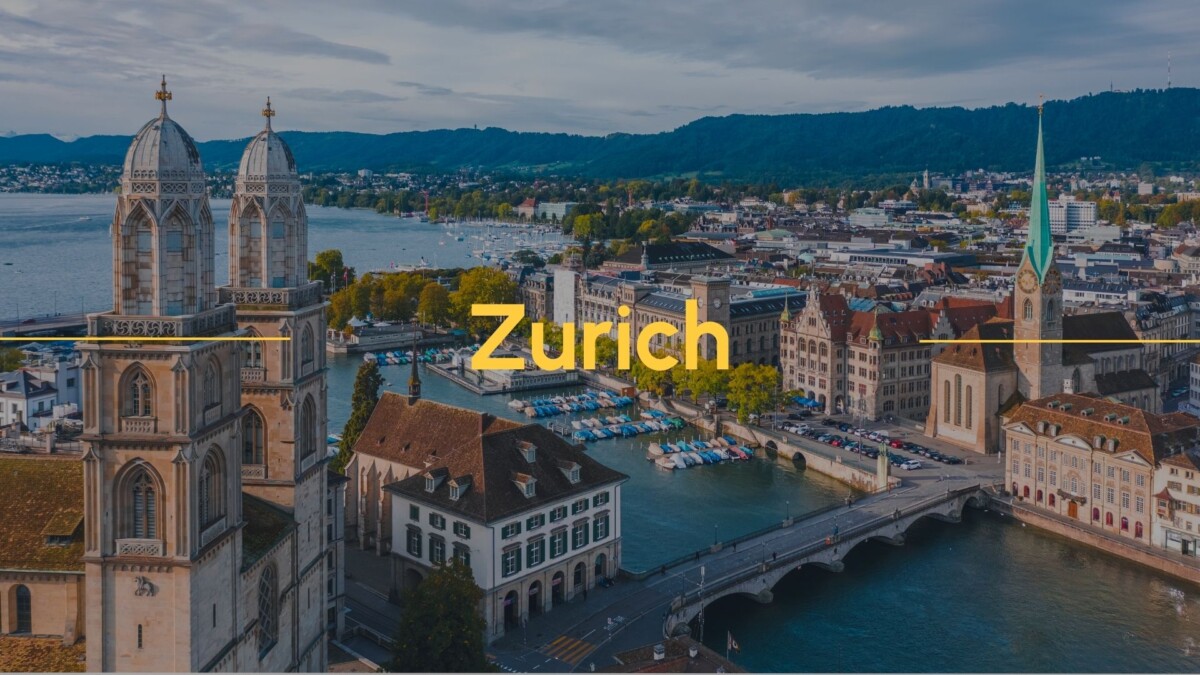
2-  Zurich — Swiss Stability Meets Deep Tech Precision
Zurich — Swiss Stability Meets Deep Tech Precision
Zurich ties with Vienna in second place, with a livability score of 97.1. But its appeal for tech founders lies in its consistency: high trust markets, deep capital reserves, and global connectivity.
Backed by ETH Zurich—one of Europe’s most prestigious STEM universities—the city has become a deep tech and fintech magnet. Over CHF 3.2 billion (approx. €3.3B) were invested in Swiss tech startups in 2024 alone, much of it centered in Zurich. It’s also a leader in smart city innovation, ranked #2 globally by IMD.
For founders building in fintech, robotics, or precision engineering, Zurich offers both intellectual firepower and regulatory clarity—a rare combo.
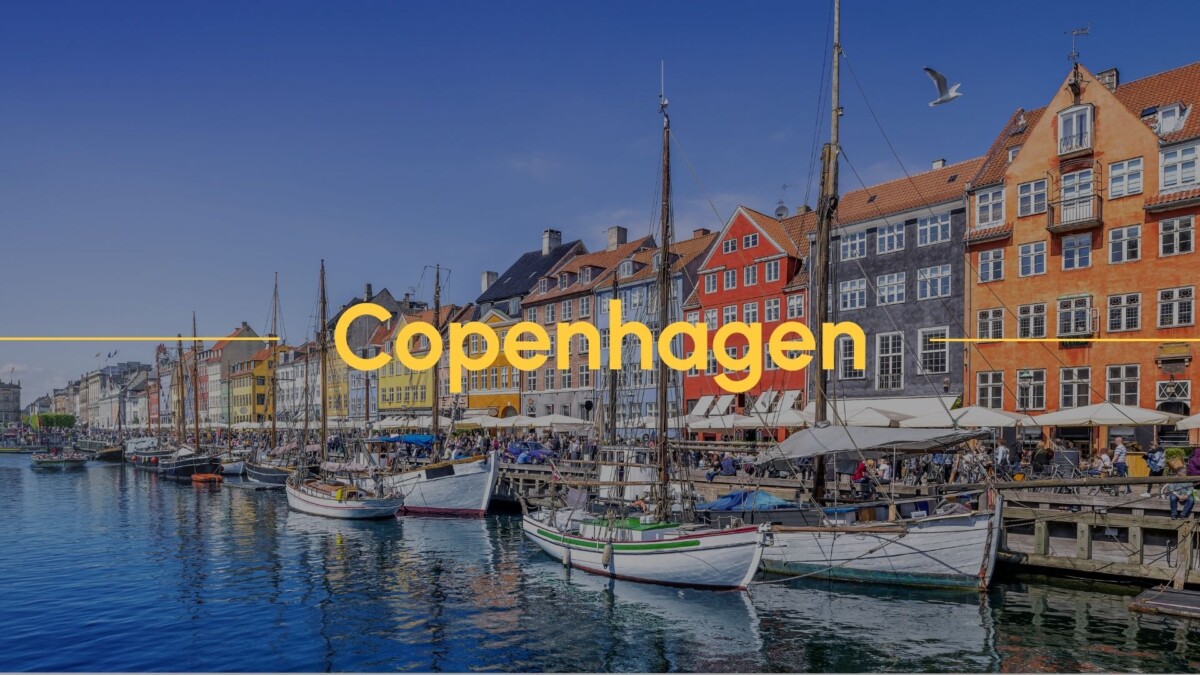
1 –  Copenhagen — Where Climate Goals Meet Startup Acceleration
Copenhagen — Where Climate Goals Meet Startup Acceleration
Copenhagen takes the crown this year with an overall EIU score of 98/100. But beyond its clean streets and efficient metros, it’s becoming one of Europe’s most agile tech environments.
The city has experienced a tech ecosystem growth rate of 8% year-on-year, outpacing the European average. StartupBlink now ranks it among the top 20 startup ecosystems globally. What’s driving it? Strong public-private partnerships, deep incentives for green innovation, and hubs like Symbion and DTU Science Park, where over 700 startups are building everything from climate AI to next-gen urban mobility. For founders in sustainability, logistics, or AI, Copenhagen isn’t just liveable—it’s investable.
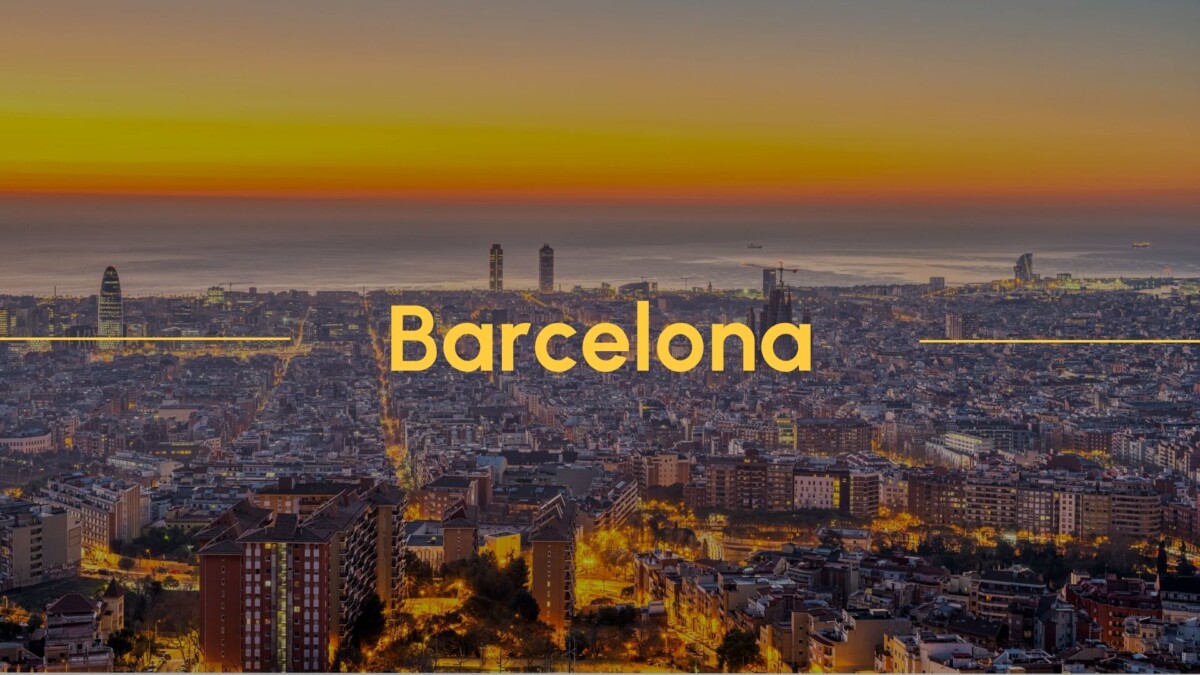
 [BONUS] Barcelona — The Tech Capital of Southern Europe
[BONUS] Barcelona — The Tech Capital of Southern Europe
While not in the top 10 of the EIU’s 2025 Liveability Index, Barcelona punches far above its weight when it comes to startup potential and international founder magnetism.
With over 2,200 tech startups, the city boasts the 5th largest startup ecosystem in Europe, according to EU-Startups and Dealroom. It’s also home to Mobile World Congress (MWC) and 4YFN, two of the most influential tech events globally, which annually attract over 100,000+ attendees, including VCs, corporates, and governments.
The Catalan capital is leading in verticals like proptech, travel tech, healthtech, and increasingly AI, thanks to institutions like the Barcelona Supercomputing Center and the recent influx of AI-focused investment from both Spanish and international funds.
Government support is another key asset: initiatives like Barcelona Activa, Accio, and Club GLOBALS are helping to formalize and accelerate growth. Combined with competitive costs (Barcelona is 30–40% cheaper than major Western European capitals) and a global talent pool (over 30% of tech workers are international), the city has positioned itself as Southern Europe’s launchpad for global tech expansion.
And yes—the quality of life still counts. From beachside coworking to vibrant cultural life and year-round connectivity, Barcelona remains one of the most livable cities for founders who want to scale without sacrificing lifestyle.
 Why This Matters Now
Why This Matters Now
Tech founders in 2025 are no longer tied to geography. They’re choosing cities that offer the right mix of capital, talent, policy, and personal well-being. What these five cities have in common isn’t just parks or clean air—it’s that they offer a launchpad for international scale.
Choosing the right base can mean faster hiring, better investor alignment, easier market access—and less burnout. The difference between thriving and treading water often comes down to where you build, not just what you build.
 At Club GLOBALS, We Connect You to The World
At Club GLOBALS, We Connect You to The World
Through our GLOBALS On Tour, Xcellerator, and GLOBALS Tech Festival (GSTF), we actively help founders explore and expand into these and other high-growth ecosystems.
Want boots on the ground in Copenhagen, Melbourne or Zurich?
Let’s make it happen.
The post Top 5 Most Liveable Cities in 2025 for Startup Founders and Tech Talent appeared first on Club GLOBALS.
]]>What is the difference between ‘Kaltmiete-‘ and ‘Warmmiete’? – German Vocabulary

The struggle with German vocab when it comes to relocating.
When you start looking at houses and apartments in Berlin, you might come across some strange vocabulary in the advertisement or in the rental agreement. A particularly confusing one is the difference between ‘Kaltmiete’ and ‘Warmmiete’. Here we explain the reason why you need to know both.
The price difference between Warm and Kaltmiete is Nebenkosten. The average Nebenkosten in Berlin is around €2.48/sqm (source: Berliner Zeitung). In case the landlord is offering something significantly higher or lower than this, it is important to find out why. If the Nebenkosten is set too low per month, you will have to cover the costs at the end of the year, which can end up being a high additional payment. It always pays to make sure you know the difference between these terms before you sign any rental agreements!
’Kaltmiete’ literally translates to cold rent and is the basic rent for the apartment with no additional costs included. Using Kaltmiete, you can calculate the price per sqm to compare the difference in rent in different areas.
’Warmmiete’ is warm rent, and is the Kaltmiete plus additional costs such as water, property tax, gas, electricity, and waste disposal services. These costs can vary depending on how many people live in the apartment, seasonal deviation, or the property market. These “side costs” are called Nebenkosten in German.
Now that you know everything about the Warmmiete- and Kaltmiete, you can seriously start looking for an apartment! Take a look at recent postings at GLOBALS Homes.
When you find an apartment it is important to register for the Burgerarmt in Berlin. If you use AiRelo, they can help you in less than 10 minutes. AiRelo helps you fill in the form and once the process is finished, you will receive the completed form in your mail inbox.
The post What is the difference between ‘Kaltmiete-‘ and ‘Warmmiete’? – German Vocabulary appeared first on Club GLOBALS.
]]>8 Things you should know about the Anmeldung
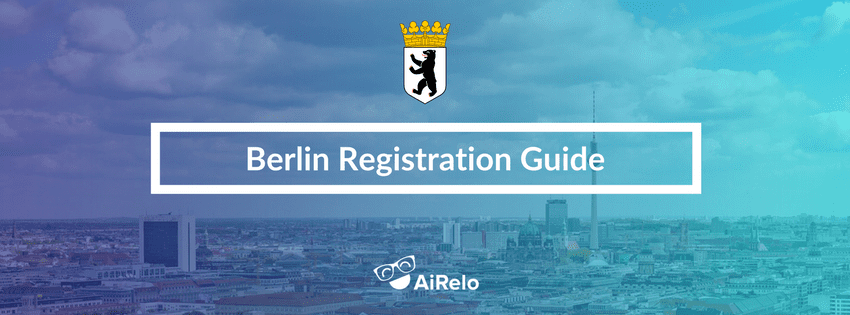
Moving to Berlin can be stressful when you don’t speak German and need to register your address with the city. Here you will find everything you need to know about the registration, so-called “Anmeldung” in Berlin.
Why
does it apply to me?
If your situation is one of the following, you need to register.
- Moving to another apartment in Berlin
- Going to Berlin from another city in Germany
- Coming to Berlin from abroad
should I register?
This registration is needed for most of the administrative things you will have to do here, such as opening a bank account, paying your taxes etc.
Not registering your address is illegal and you can get a fine for it. Not the most noteworthy thing you will do in Berlin for sure but mandatory and easy to do when you know how it works.
What
do I need?
To avoid having to go back and forth to the city hall several times, come prepared with everything that you are required to bring. Here is a checklist of what you need:
❐ Proof of identity (passport, ID, visa if you need one) Note: check if they are still valid!
❐ Rental agreement (a sort of letter that your landlord gives you to prove that you are staying as a tenant in their apartment) The legal format can be found here.
❐ Civil status certificate if it is the first time you are registering (certificate of marriage, birth certificate)
❐ Anmeldung Form (most important document and hardest to complete when you don’t understand German) help over there ?
is the Anmeldung Formular?
This form will be mandatory for your life here in Berlin. To complete it, we created a chatbot, AiRelo, which asks you questions and is available in over 10 different languages, and delivers the form as a pdf in German. You just have to print it and bring it with you to the Burgeramt/city hall and that’s it!
Where
to register?
To register you need to go to the Bürgeramt which is the equivalent to the city hall and every district in Berlin will have one. You need to book an appointment to go there to avoid waiting time up to 3 hours or more. You can also decide to go without an appointment and take a ticket with a number and wait. Once your number is called you go to a room where they will ask you your proof of identity, confirmation of arrival by your landlord, and the Anmeldung form.
In the end, they will give you a paper that looks like the picture below, do not lose it it is important for your taxes, opening a bank account, your German health insurance (Expat, Public or Private), etc.
to take an appointment?
Booking an appointment is the best way to save time during the registration process. You can pick among one of the 40 Bürgeramt/city halls. Also selecting one in the district you live in is not mandatory so you can choose whichever one is the most convenient for you!
Here is the link to book an appointment “Termin” in German. Tips: If you don’t see any slots available that suits you, refresh the page a few times and most of the time a new slot will appear.
The post 8 Things you should know about the Anmeldung appeared first on Club GLOBALS.
]]>Attractive, vibrant and dynamic. This is Berlin, a city where people are constantly moving from or to. However, moving to Berlin can be stressful especially when it comes to finding a place to live!

Prices
To find affordable accommodation in Berlin, the first thing you do when looking for a flat is to filter them by price, you have a maximum budget and don’t want to go over it. However, a good tip is to be ready to compromise, sometimes in order to have the flat, you must be ready to pay a little bit more than what was written in the ad. So go for apartments below your maximum so you still have one card up your sleeve when it comes to negotiations. Since the competition is tough, offering a little bit more can change the game. This tactic may not work when applying for a shared flat since some people do not rent their flat for the money but to share a home with other people and to them, you must sell your personality.
Type of apartment
In Germany, shared flats are very common and a great way to meet new people when you’re new in the city. Some flats are of course cleaner than others so you should definitely visit the flat before signing any contract – especially to avoid any online scams. If you are looking for studios or bigger apartments, the price will increase quickly and agencies might be the best option.
The message
The message you send is crucial to get the apartment, it is the first impression that counts. Don’t write a cover letter of 1 page, they won’t read it. The best option is to write a few lines (10 max). You can start with a general presentation; name, profession, languages spoken. Put the date you want to move in and, if any, the date you want to move out. Then you can share your Facebook profile so they know you are “real” and they can learn more about you. At the end write a few lines on why you want the room/ flat. For instance, because it seems clean or the flatmates seem to look for the same thing as you (some small talks occasionally in the shared kitchen or go out together etc.). You should also ask to visit the flat as soon as possible, it will show your motivation. This will also scare away scammers who will ask you to pay first without visiting anything because they are “not in the country at the moment” and then they send you the keys by mail.
Neighbourhoods
Berlin is a huge city with plenty of residential neighbourhoods, some being more lively than others. You should pay attention to the public transportation access in the neighborhood you choose. Some are more accessible than others and it might take you 15 minutes or more to reach the nearest tram/bus/metro station, which is something to bear in mind when working out your commute to work.
Specificities
Regarding the shared flats (WG in German), ads can be really specific; “only girls” or “only vegans” etc. Even if you want the room don’t lie in your email – even if you get the flat it will be a difficult living situation if you don’t agree on certain philosophies. When they ask for specific things (even if it is not fair) they don’t care and will find someone matching the criteria.
Website
Check out our newest platform, GLOBALS Homes where you can find or list apartments to rent, rent furnished or buy.
The post How to Find Affordable Accommodation in Berlin ? appeared first on Club GLOBALS.
]]>